For years, people involved in the oil and gas industry have been innovating and creating ways to get accurate measurements. From extraction to delivery of these raw materials, everyone in the business has invested a great deal of effort to obtain the most accurate measurements.
As a result, scientists and engineers have been working hard to find new methods and techniques to make more efficient metrology systems. Thanks to their hard work, the creation of different flow meters was possible and because of this, the oil and gas industry is still strong today.
These flow meters are used by industry (especially gas and oil) to calculate the mass flow or volume flow of fluids. Such applications define the capacity and type of flow meters. Gases, liquids and fluids are measured based on mass flow and volume flow.
From corrosive subsea environments, offshore production platforms, onshore oil fields or refineries, we have the flow expertise to tackle these tough jobs. Difficult oil and gas flow metering challenges such as high pressures, pulsating flows, corrosive media and harsh environments are our daily business. We work with many of our upstream and downstream customers to develop custom flow solutions for their toughest challenges, handling the most demanding chemicals in their most remote and hazardous areas. We work with you to improve process efficiency, reduce costly production downtime, and establish real-time monitoring and control.
Where and how are oil and gas formed?
Before discussing the different flow meters commonly used in the oil and gas industry, it is important to first understand the process of how the industry collects raw materials.
Both of these raw materials exist in different geological sources. For the most part, natural gas and oil fields exist on sedimentary rocks such as sandstone and limestone. The main reason for this is that these materials move easily through the rock, making them easier to accumulate. The capacity of the discovered reservoirs can be determined by their porosity, while the production capacity is proportional to their permeability.
To start the flow, they drill inside these rocks, which will make the fluid easier to extract. To initiate, increase or sustain flow, water is pumped into the rocks, which are usually located underground. High pressure water is pumped into these rocks, which will increase the flow rate and increase fluid extraction. A flow meter called an Apure electromagnetic flow meter is used to accurately measure the amount of water pumped inside the rock.
However, in some cases, drilling and pumping is not sufficient to obtain this material. Most of the oil or gas found in impermeable rocks cannot be formed in the conventional way. These materials are called “unconventional hydrocarbons,” and they include shale oil, coalbed methane and shale gas. Because of the very low permeability of the rocks, accumulation should be stimulated to start the flow and enable the extraction process. To do this, a method called “hydraulic fracturing” is required.
In hydraulic fracturing, a mixture of sand and water is pumped into the rock. Due to the high pressure, small cracks (fractures) are created, which will allow the material to move freely inside the foundation. Hydraulic fracturing is accomplished by causing these fractures to open to allow the material to move, which is where the sand comes in; opening these fractures, resulting in high permeability. To accurately measure the mixing of fracturing fluid and additives in the mixture, Apure’s electromagnetic flow meters are used.
Now that we have explained an overview of how the oil and gas industry gets these raw materials, the next step is to understand how they are measured using different types of metering systems.
Ultrasonic flow meter
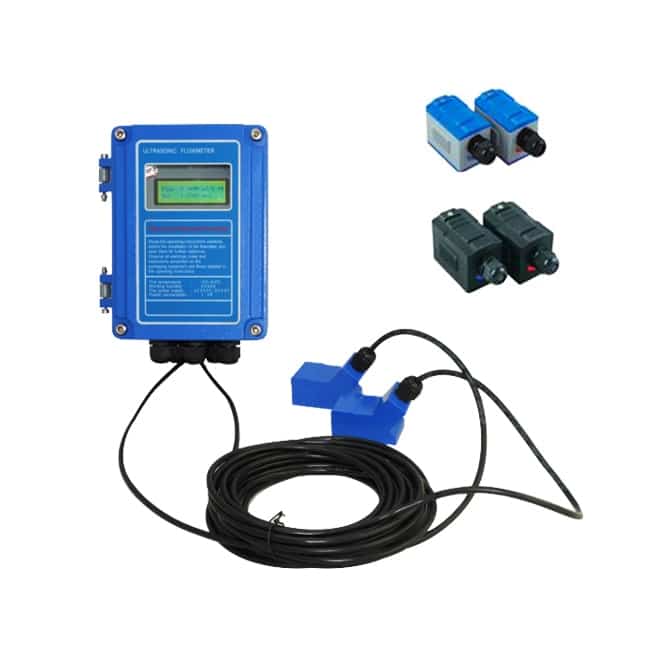
Ultrasonic flow meters measure the velocity of a fluid flowing through a pipe by using sound waves. Once the velocity of the fluid slowly increases, a linear change in its frequency becomes apparent.
Ultrasonic flow meters can be used to measure the flow rate of fluids inside and outside of a pipe; the inline design installs the meter inside the pipe, while the clamp-on model uses a transducer to measure velocity. However, clamp-on models are less accurate than inline models. As a result, they are only used for spot checks to obtain immediate measurement results.
Ultrasonic flowmeters and other flowmeters designed for crude oil can be used to measure 20-inch pipes inline. In addition, the clamp-on design is suitable for many different things and is durable. Not to mention, it requires very little maintenance.
Coriolis flow meter
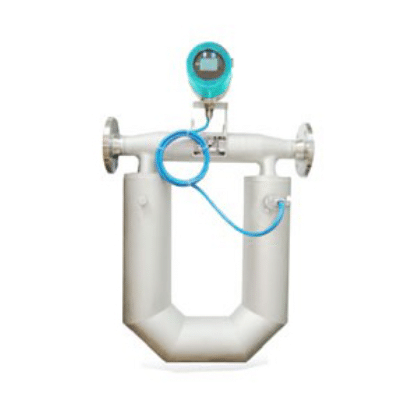
The technology used in Coriolis flow meters is not the latest in measuring natural substances in the oil and gas industry. The first industrial patents for Coriolis flow meters date back to the 1950s. However, it was not until 1970 that the application of this technology in this field started. Until now, nothing has changed, despite improvements to the meters for more accurate measurements.
One of the original designs of the flow meter was that it had a single thin-walled tube. It was very accurate; however, the practicality of the model was the primary issue due to its vibration problem. To solve this problem, the design was changed to a two-tube design instead of one.
Despite going through different designs, the main principle of Coriolis flow meters never changed. As material flows through them, inertia is created through the oscillating tube and the tube twists. The number of twists is proportional to the mass flow rate. This is then measured by the flowmeter transmitter and sensor to produce a linear flow signal.
There are several advantages to using a Coriolis flow meter. One of them is that it is very accurate. These flow meters are more commonly used to measure various petroleum products such as crude oil and natural gas. The main point of the flow meter is that it primarily measures mass flow rather than volume. It is best suited for measuring petroleum products because the main concern in measuring these products is heat rather than volume.
Typically, this type of flow meter is suitable for pipes with diameters of 1 to 4 inches. Today, however, larger models are more readily available than ever before. The only drawback of the Coriolis flowmeter may be that it is more expensive than other types of metering systems. This is worth it because it is less expensive to maintain than other flow meters.
Electromagnetic flowmeter
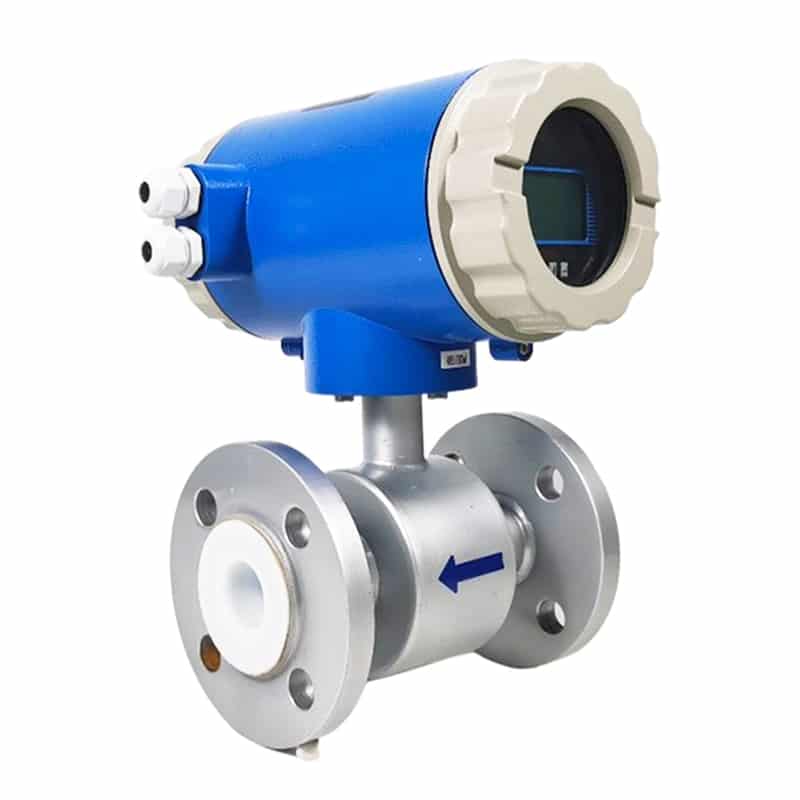
Electromagnetic flow meter is based on Faraday’s law of electromagnetic induction principle of manufacturing a flowmeter to measure conductive liquids, from its measurement principle can be seen in its limitations: can not measure steam and gas, the measured medium must be conductive, and the conductivity can not be less than 5μs/cm. Its advantage is that it can measure dirty, viscous and corrosive fluids, such as pulp, slurry, sewage, etc.. No pressure loss caused by flow detection, large flow range, wide range of caliber, for large diameter pipeline can be used insertion type electromagnetic flowmeter.
Electromagnetic flowmeter electrode and lining are in direct contact with the measured medium, so for the measured medium corrosive and operating temperature to choose the appropriate electrode and lining materials.
Vortex flow meter
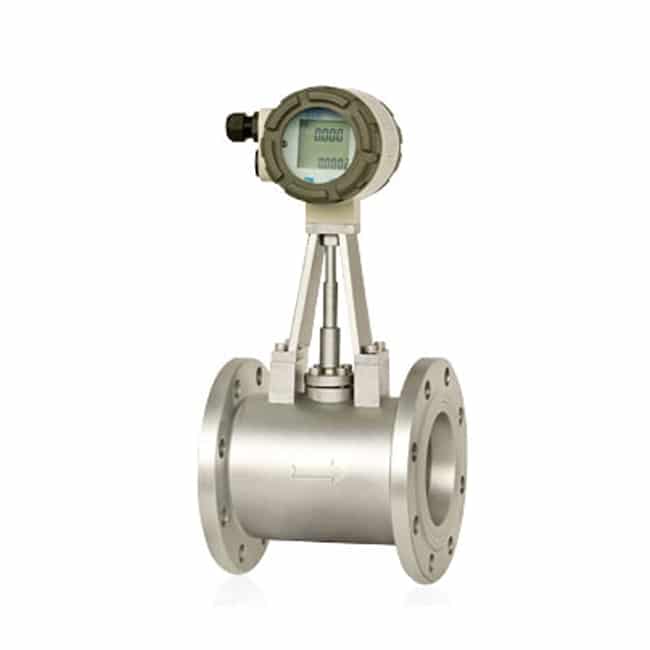
One of the most versatile flow meters, the vortex flow meter, can easily measure the flow of gases, liquids, and steam.
In years past, vortex flowmeters lacked the necessary approvals for use in industry. However, in 2007, the American Petroleum Institute approved a draft standard for the use of this flowmeter. Since that time, several companies in the industry have been actively working with API to further develop the standard and its approval.
The standard is applicable to liquid, vapor and gas flows and was expanded for further use in 2010. Although there is an uncertain future, the design is clear for the presence of gases and liquids. In recent years, vortex flowmeters have had a limited impact on the market, but the preference for future companies is steadily increasing. However, due to other competitors such as ultrasonic, differential pressure and turbine flow meters, it has had little impact on the gas trade delivery market.
Turbine flow meter
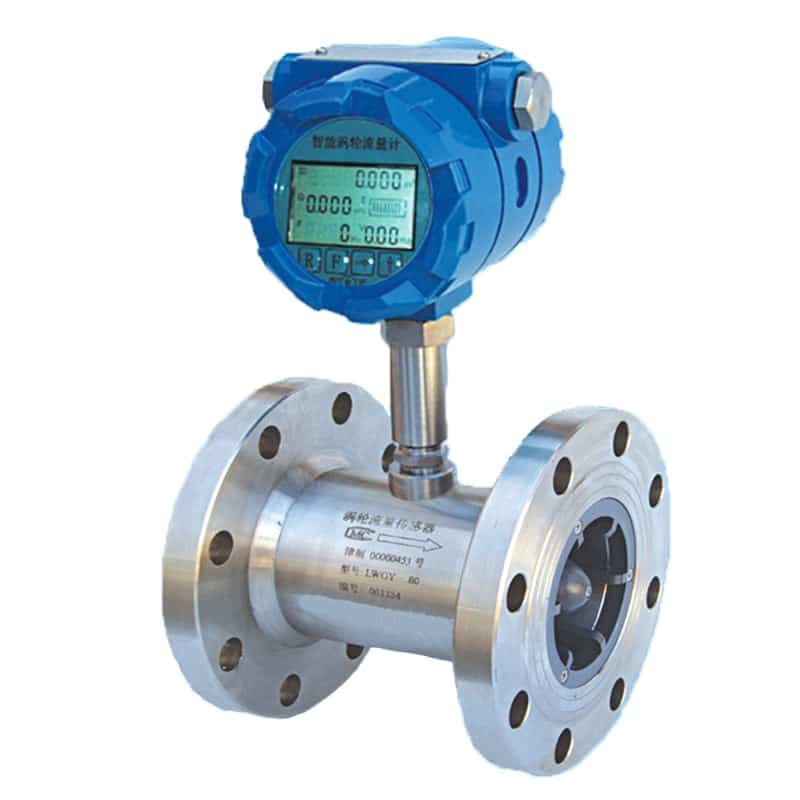
Turbine flow meters use a mechanical rotor which is attached to a shaft inside a pipe. It is then used to measure the volume of the gas, fluid or steam passing through the pipe. As the substance passes through the pipe, the rotor rotates at its speed, depending on the speed at which the substance is passing through the pipe. The rotational speed resulting from the rotation of the rotor is determined by the use of a sensor or other mechanical method.
Typically, magnetism is used to allow the sensor to take readings from the rotor, with the magnet located on the outside of the pipe. Through the use of a signal, the sensor and transmitter determine the volume of material flowing in the pipe.
Turbine flow meters are very inexpensive in terms of pricing. In addition, they give more accurate results when the substance being measured is a gas or any other material that is free of debris at low flow rates.
One disadvantage of using a turbine flowmeter is that it does not adapt well to changing flow rates, as the mechanical parts can wear heavily and need to be replaced immediately. In addition, turbine meters work best when measuring the mass of a gas with unknown characteristics.
In addition to its uses, it is commonly used as a billing meter to measure gas or water in commercial, industrial and residential buildings. In this respect, however, it competes with volumetric flow meters. The latter is more suitable for measuring pipes of 1.5 to 10 inches in size, while the turbine flow meter is best suited for pipes of 10 inches or more in size.
Thermal flow meter
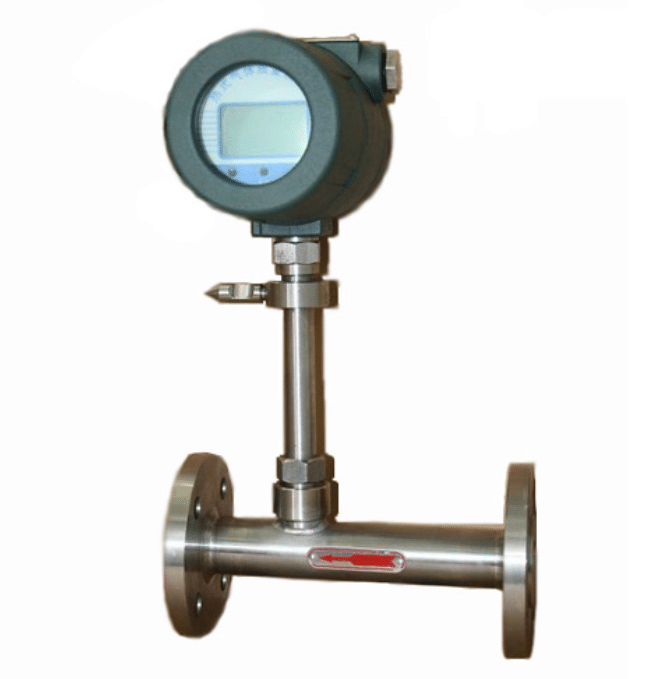
In its primary sense, a thermal flow meter measures the rate at which heat dissipates as it is injected directly into a gas stream. In most cases, thermal flow meters are used exclusively to measure gases.
The heat dissipation depends on the composition and temperature of the gas. When the composition or temperature is minimized or this level of accuracy is within acceptable parameters, the thermal flowmeter is the best choice.
Differential flow meter

Like its distant relative, the ultrasonic flow meter, it also measures the flow through the pipe. It differs from other flowmeters in that it uses Bernoulli’s equation. In addition, differential flow meters use constriction to slow the flow and pressure of material in the pipe.
As the flow pressure slowly increases, the magnitude of the pressure drop increases proportionally. The data from this event is transmitted over different sets of pressure readings. Using this information, it is possible to calculate the pressure differential to measure the volumetric flow rate.
Differential flow meters are usually low-cost. And there are also different versions for different substances to make accurate measurements for each fluid. However, gases are a special case because in order to get accurate readings for a specific gas, differential flow meters should be used in combination with other sensors for different factors such as temperature, pressure, gas composition and gas density.
Although it is an excellent flowmeter in its own right, industry prefers other types of metering systems. This is mainly due to its inaccuracy when it comes to other factors such as temperature, pressure, etc. In addition, in order to obtain the most accurate gas measurements, it needs to be used in combination with other sensors or a different version of differential pressure flowmeter altogether. Due to the above factors, it is difficult to obtain accurate readings. This is mainly the reason why the oil and gas industry prefers other types of metering, especially when dealing with gases.
Positive displacement flow meter
There are different types of positive displacement flow meters: oval gear, piston, rotary, diaphragm, chapter-actuated disc and screw.
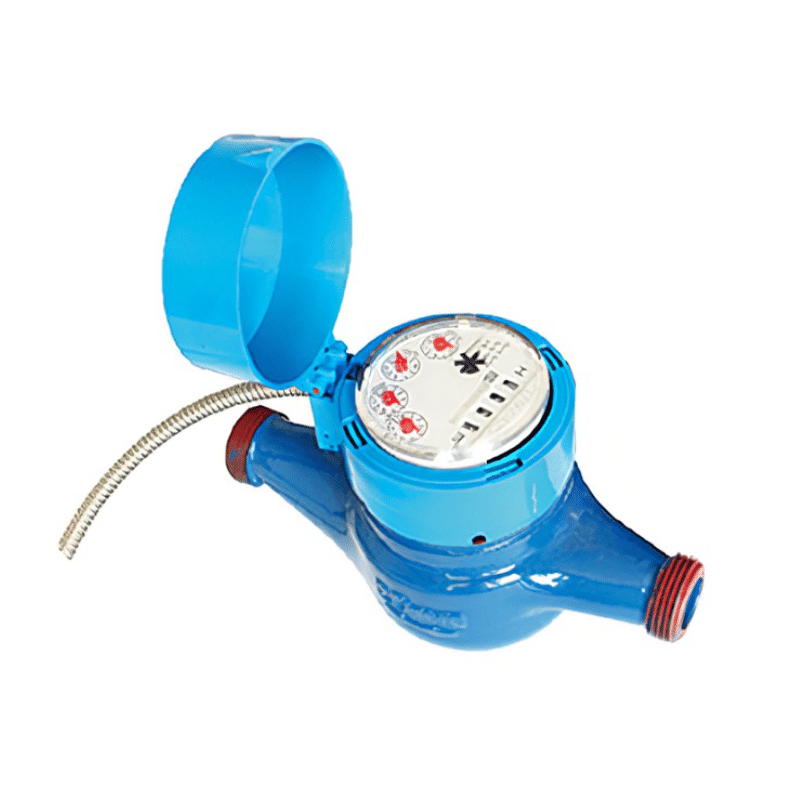
Volumetric flow meters can be used for a variety of things involving commercial, industrial and residential applications. They are most commonly used to measure gas flow. However, turbine flowmeters compete with volumetric flowmeters in this regard. One of its advantages over turbine flowmeters is that it excels at handling a steady flow in pipes 10 inches in diameter or smaller.
Both diaphragm and rotary volumetric flowmeters are typically used to measure gas flow. The latter is preferred over competitors such as Coriolis flowmeters, primarily because volumetric flowmeters do not have the industry approvals required for field applications.
Oil and gas flow meter selection
The main factors to consider in choosing a suitable flowmeter include: fluid characteristics, flowmeter characteristics requirements, installation conditions, environmental conditions, and cost.
In addition, the selection of flow meters can not fully pursue high performance and high precision, which not only increases the purchase cost, but also increases the cost of spare parts. It is also necessary to consider the calibration and maintenance of flow meters.
Accurate measurement and regulation of fluid flow is the basis for ensuring the safety of petrochemical production process, improving product quality and reducing energy consumption. Due to the complexity and diversity of flow measurement media, there is no universal type of flowmeter, no flowmeter can be applied to any different conditions of all kinds of media. Each kind of flowmeter has its advantages and limitations of measurement, different principles, different structures, different functions of the flowmeter in their respective applicable scope play a role. Therefore, the selection of flowmeter needs to follow the standard specifications and selection principles at the same time comprehensive consideration of various factors affecting flow measurement.
Extended reading:
Solvent flow meter
Sewage flowmeter
Ultrasonic flow meter working principle
Liquid flow meter
